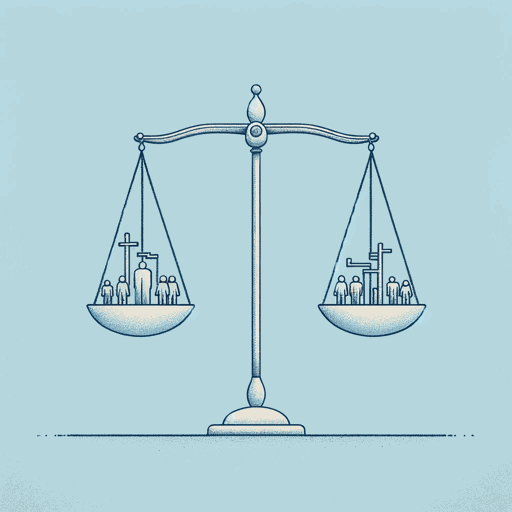53 pages • 1 hour read
Anthony DownsAn Economic Theory of Democracy
Nonfiction | Book | Adult | Published in 1957A modern alternative to SparkNotes and CliffsNotes, SuperSummary offers high-quality Study Guides with detailed chapter summaries and analysis of major themes, characters, and more.
Summary and Study Guide
Overview
An Economic Theory of Democracy is a 1957 treatise by the economist Anthony Downs. It argues that economic theory can usefully be applied to non-market political decision-making. To this end, Downs develops an analytical model for the study of democratic behavior that follows the paradigms of economic theory and adopts an empirical, data-led approach. An Economic Theory of Democracy is an early proponent of rational choice theory, the theory that a society is composed of rational actors, and that rationality enjoins the pursuit of self-interest as a primary goal. The treatise also formed part of a wider US movement in social science known as “rationalization,” dedicated to rationalizing the study of human behavior, moving away from the cultural and historical analyses which had traditionally been prevalent in the social sciences. Down’s argument and methods were influenced by these ideas, which became a strong school of thought in intellectual political circles in the 1950s, gaining expression in publications at the end of that decade. These include V. O. Key, The Responsible Electorate: Rationality in Presidential Voting 1930-60 (1960), which pioneered quantitative methods to explain and predict voter behavior; Richard Neustadt, Presidential Power (1960), on popular levers of power in a presidential democracy; and Thomas Schelling, The Strategy of Conflict (1960), an application of game theory to the Cold War.
Downs’s book remains one of the most influential works of this movement, shaping how political behavior is understood and enacted today across the world.
This guide is based on the original 1957 edition published by Harper & Brothers. Citations given refer to page numbers in this edition.
Content Warning: The source text reflects social attitudes prevalent at the time and uses androcentric language.
Summary
An Economic Theory of Democracy is divided into four parts.
The first part establishes a model of pure rationality and describes the perfect environment for the exercise of the rational mind. It applies the basic principle of capitalist economics to politics: that is, that individual actors (people and organizations) are seeking to maximize profits. The model asserts that there is no way to predict or prescribe what actors will do with those profits; what can be known is that they will seek to acquire the greatest possible resources at the minimum necessary expenditure of effort. When applied to democratic politics, this theory states that voters will elect those that can deliver them the greatest benefits, whether material or ideational. By the same token, those seeking votes (politicians, movements, governments) will do everything they can to maximize their share of votes in order to gain office, power, and influence. In Downs’s introductory model in Part 1, he assumes that both governments and citizens pursue their goals with perfect information, with citizens fully aware of a government’s platform and political capacity, while the government knows both viewer preferences and the relative weight they assign to different issues.
This picture undergoes a shift in Part 2, when Downs introduces the notion of uncertainty to the model. All actors remain rational, but they encounter variables and uncertainty in determining the world around them, i.e., in correctly identifying the factors necessary to decide rationally. Downs notes that politics exist in a severe condition of uncertainty: Voters confront a mass of information with a limited time to make a decision, and they must also gauge their prospective actions against the likely actions of other voters. Similarly, governments cannot discern the preferences of a majority, and so they attempt to find individuals who purportedly represent the majority on any particular position. Such claims may be exaggerated or fraudulent, but governments will follow the counsel of that person, provided that their influence is sufficient to sway a portion of the public, who in the real world rely on experts (both real and self-styled) to inform them on political matters. Voters rely on ideologies to provide a shorthand of likely decision-making by governments, choosing based on an internalized—imaginary—coherent vision of the good life rather than assessing complex menu of policy options.
In Part 3, Downs introduces the specific variable of information costs—the expenditures of time and money required to obtain information. The premise of Down’s model holds that, in order to overcome uncertainty, citizens have to invest in learning their true interests and the ability of governments to deliver them. However, in a world of rational actors, no one is delivering information for the public benefit. Government information will cast a positive light on its own record, and mass media is likely to reflect the interests of corporate owners and individual contributors. If citizens do overcome the barriers to achieve political awareness, they may feel that their vote is practically worthless given the number of voters and the probability that, whoever wins, that government will be swayed in practice by its most powerful and influential constituents. For the average voter, Downs concludes, a thorough commitment to rationality may lead to an abstention from voting entirely.
In Part 4, Downs reviews the existing literature on politics and economics, warning against the failure to consider politics on its own terms and assume that it operates like any other market. He then provides a series of hypotheses for testing his theory in the real world, such as the tendency of a two-party system to exhibit ideological convergence in order to capture a majority, and citizens voting even when they know it makes no individual difference, in order to affirm the value of democracy.

